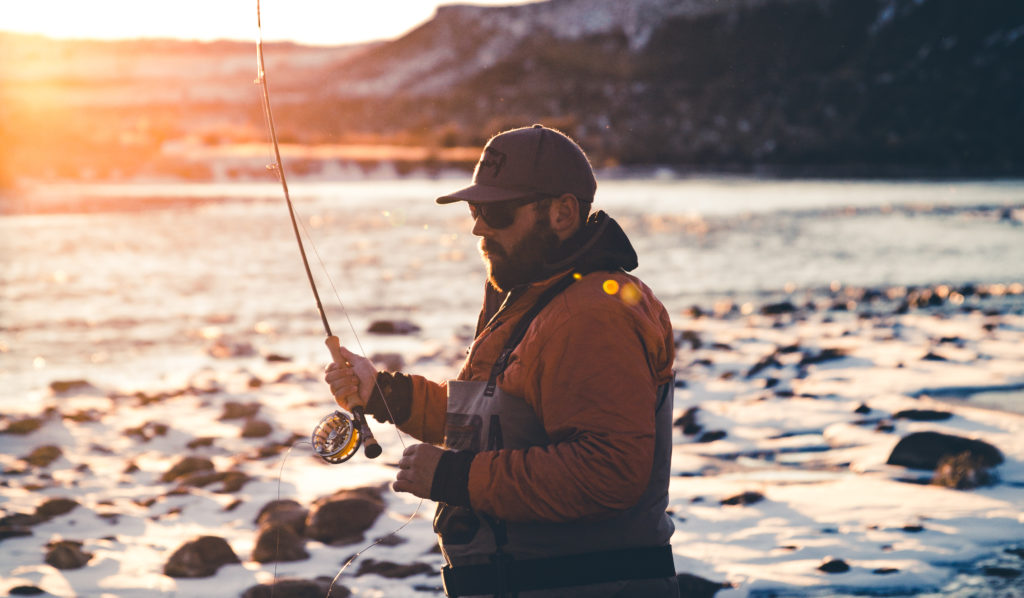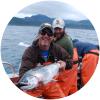“Squirmy wormies, bead eggs, globules of chenille and antron tied to a hook–how can you call those things flies anymore?” said my friend as he pulled on his waders. We were discussing spring fishing and whether using some of the new fly fishing techniques were hurting the sport. I had recently read an article on The Hatch called “5 Reasons Beads are Better Than Egg Fly Patterns.” I had offered the idea that trout eggs and aquatic annelids are part of the natural food web, so why discriminate? “Don’t hate, collaborate,” I said as I tied on a soft, rubber egg in tangerine. My friend, no purist by any stretch of the imagination, balked at the notion that it doesn’t matter what fly you use. “At one point,” he said, “You have to decide what kind of fisherman you want to be. Which, of course, is a decision about what kind of person you want to be. And beads and rubber worms are for hacks.” With this, he stomped off into the nappy sage and towards the river.
What’s driving my friend’s disgust for bead eggs and Squirmy Wormies is an argument that, like spawning trout, turns up each spring without fail. In the local breweries, in line at the grocery store, and at my main hangout place, Don Juan’s, I hear the same philosophical debate about which flies are ethical and which are not. Are plastic beads pegged to your leader flies in any stretch of the definition? Will the Squirmy Wormy be the end of fly fishing as we know it? Whatever happened to flies made of feathers and fur, doggone it?
Things have changed. I have fished through the petty controversies of the late 90s, when the weighted, cone-head wooly bugger burst on the scene. The mere mention of the fly made the traditionalists rage with anger, and caused civil unrest from Fort Collins to Spokane. Purists said it was more of a lure, not a true fly. Recall, if you will, the Ban the Twist Nymph campaign of 1995, when the futuristic materials of Gary LaFontaine’s invention caused a stir. And now the Mop Fly, which is simply the thick material snipped from dollar-store mops and tied to the hook shank, has been dubbed “the most sinful fly of all time” because it seems to catch trout with no effort or intelligence at all from the angler. I clearly remember a heated conversation on the Henry’s Fork where a guy standing on the opposite bank was outraged by my fishing techniques. He cussed my San Juan worm. He said he’s never use a foam strike indicator because it wasn’t natural. And once, while out fishing the public access along the North Platte, I encountered a fisherman from Utah who seemed dazed, as if he was in dire need of food and water, as if at any moment he might topple in the flattened riparian vegetation.
“Do these fish ever take a dry?” he croaked. Was his question directed at me or the universe? He seemed on the verge of tears. He had what looked like a size 16 Hendrickson on the end of his line. It’s a dull fly that I almost never use. He had been pounding the banks for days without moving a single fish. I gave him a bottle of water and I told him that you had to use wet flies if you want to knock them dead on the North Platte. There’s a twenty minute window in the evening where, if the wind dies down and you have a stockpile of karma on your side, fish might take dries, but don’t rely on it. I told him that every few years there’s an August hopper hatch on the river that makes the guides and bloggers write in all caps as if they’re yelling about how good the fishing is. But those events are rare. I encouraged him to get his flies down to the bottom, where the fish are. I offered him some split-shot. I shook the baggie of lead midair. He recoiled at the suggestion.
“I only fish dries,” he said, “I’d rather not catch a fish if I have to use all of that lead and plastic.” And with that, he stumbled off, a man dressed head-to-toe in Gortex. His reel and fly rod were crafted of space-aged materials, and yet his fly was caught forever in the 1918.

It’s April and the fish are on the redds. These clay-colored areas you see in the river floor are trout nests dug by the great tails of large spawning trout. Most of the redds are in shallow, fast-moving water. It’s exciting to see these fish doing their thing. Everyone knows spring is here when the trout pair up and begin to guard their redds. No one is immune to the thrill of this sight. Even my dogs get in on the action. They spot the pairs of trout finning in clear water, and bolt towards them. The fish zoom off to the deeper water, and vanish. But if you can control your dogs and hang out for a few minutes, you’ll see the same fish, hen and buck, return and take up their stations. They gaze upstream and hold their positions in the current with seemingly no effort.
I imagine the stream bed is full of tumbling trout eggs in April and May. Fishing with beads, soft rubber eggs, and other eggy patterns is simply “matching the hatch.” I point this out to my friends when the yearly egg debate rears its ugly head. I point out that in Alaska, egg patterns and beads dominate the fly drawers at the fly shop. Egg patterns are ubiquitous in Alaska, and fly fishermen use them without stigma on famous rivers where they target king daddy trout and char. Is the outrage about egg patterns based on the latitude where we live? Is there a middle ground where the bead peggers and the traditionalists may meet?
People take this stuff seriously. It must have something to do with ego and the stories we tell ourselves about our own stations in the murky realms of ethics and values. And folks don’t like it when you point out their hypocrisy. I have enough in my life to feel guilty about, so I refuse to take the bait on whether or not plastic trout beads are ethical or not. The Game and Fish says you can peg plastic eggs to your leader as long as they are two inches or less from your hook. For now, that’s good enough for me. If I have anything to say about spring fishing it is this: eschew the redds and target the smaller fish. It’s the only time of the year when catching the smallest fish in the run is the reason for true celebration; let the big fish spawn in peace. And at the moment I don’t own any Squirmy Wormies, but that’s about to change. I fish on, through the new flies, the controversies, the sparkling, outrageous materials, and newfangled gadgets that promise to make fly fishing better, more exciting, more productive. The gear and new swag is coming at us like a locomotive.
What doesn’t change it this: the enduring sound of water moving over rock, the brain of a wild trout, the distinct red slashes under a cutthroat’s chin, the sounds of nesting geese squabbling in the reeds, and the way the April air chills when the sun begins to set, and you know it’s time to reel up and head back to town.




